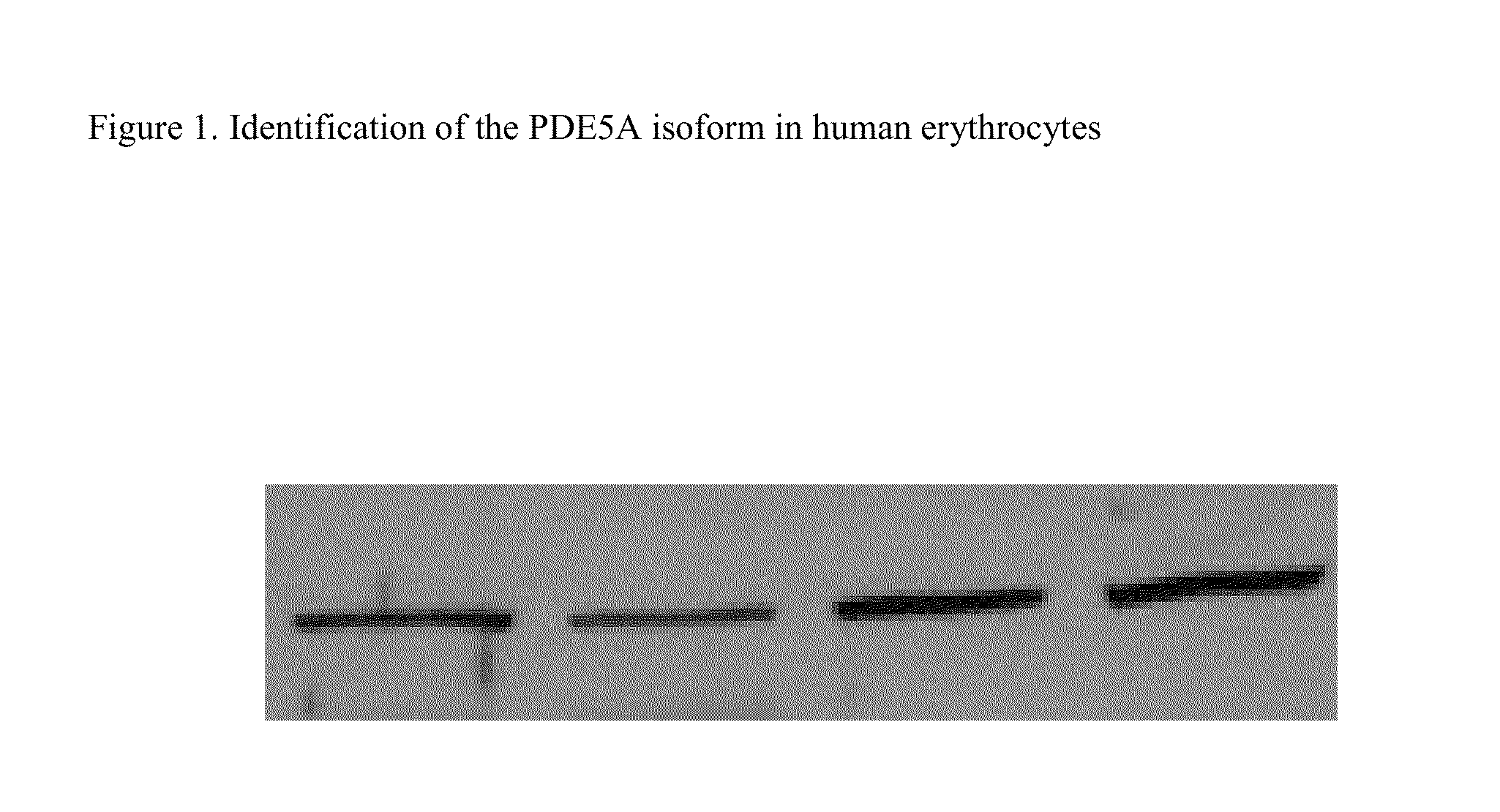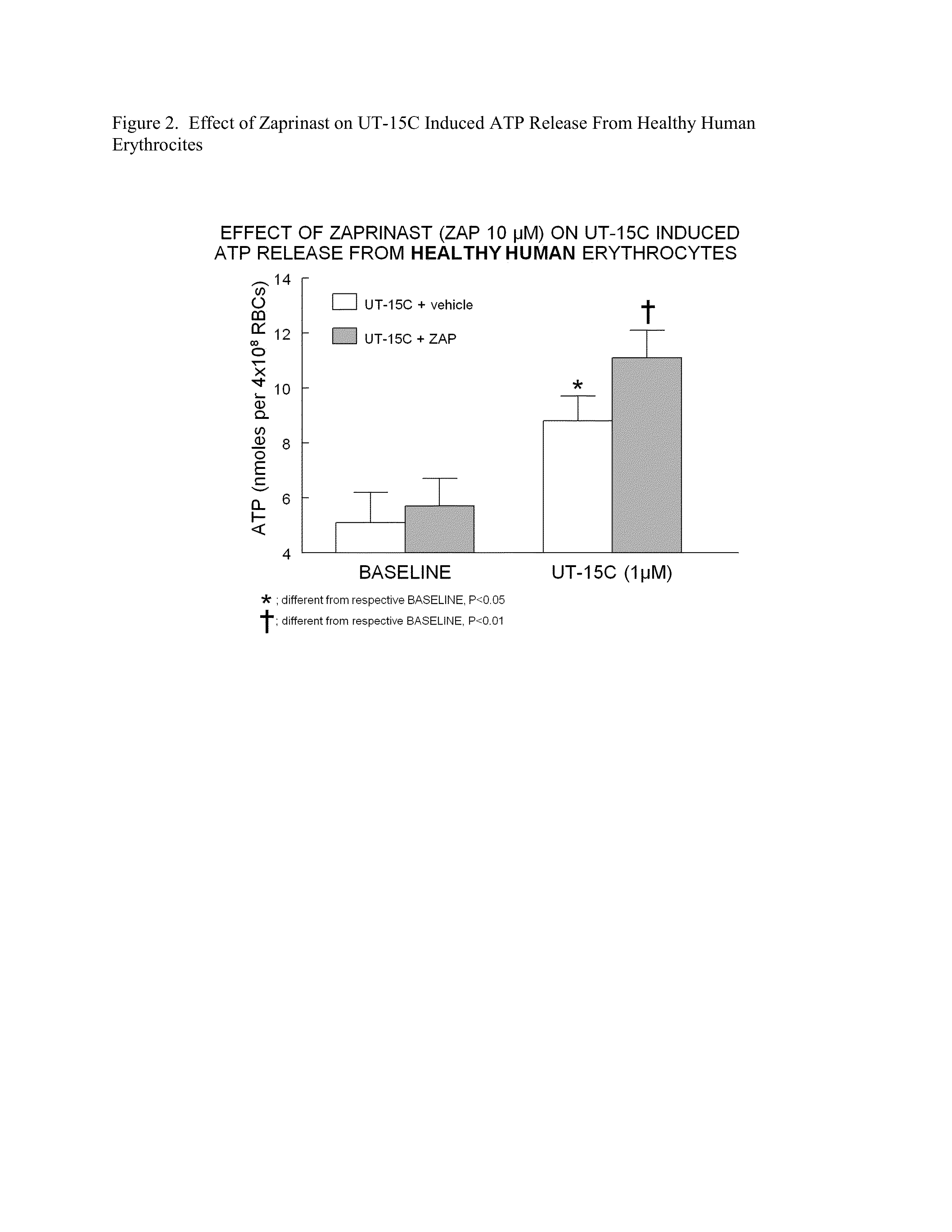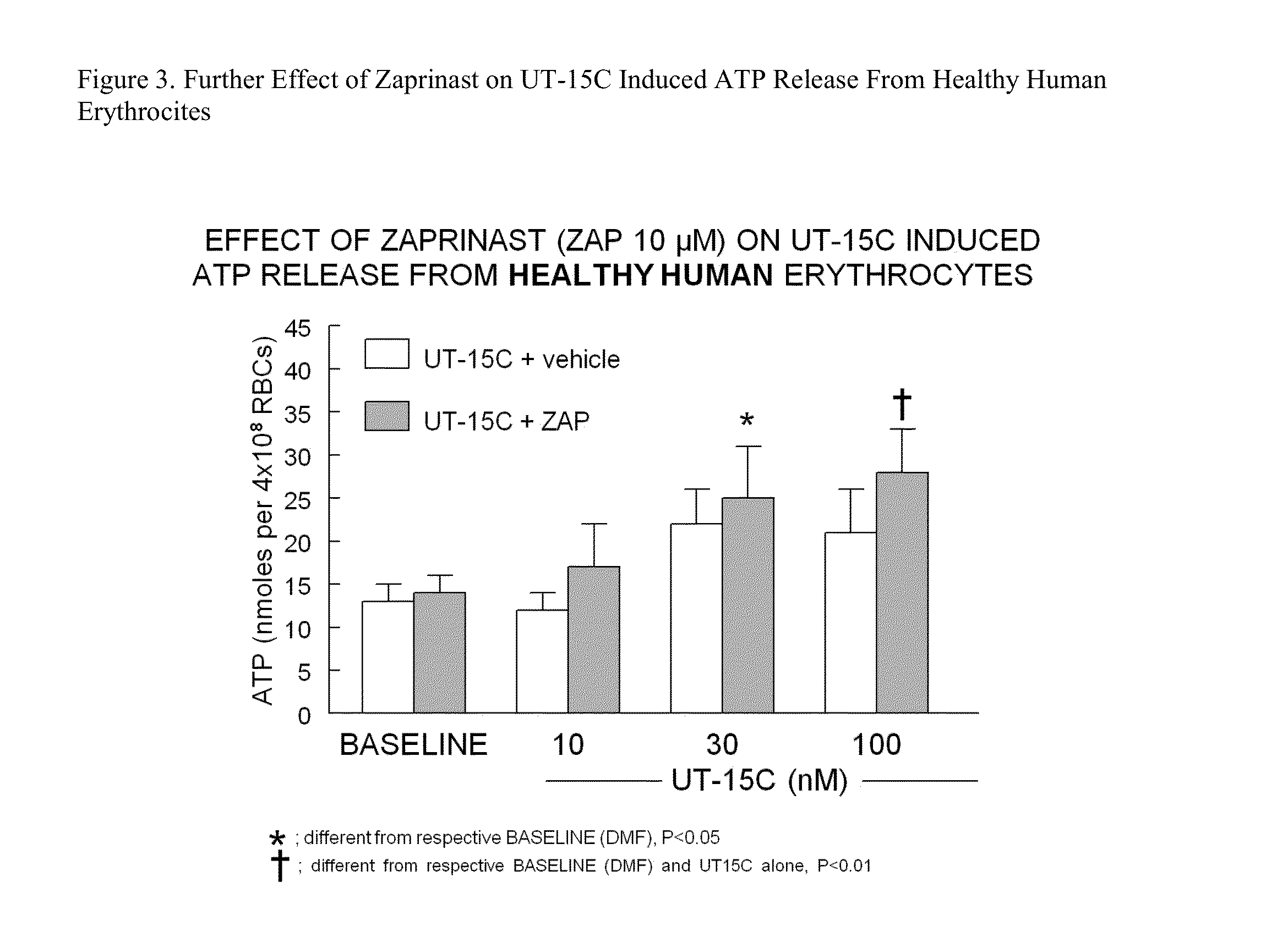Method of identifying therapies for pulmonary hypertension
a pulmonary hypertension and therapy technology, applied in the field of pulmonary hypertension therapy, can solve the problems of increased stress on the right heart, death, and inability to achieve the effect of increasing the activity of pulmonary hypertension
- Summary
- Abstract
- Description
- Claims
- Application Information
AI Technical Summary
Benefits of technology
Problems solved by technology
Method used
Image
Examples
working examples
NON-LIMITING WORKING EXAMPLES
[0034]Erythrocyte ATP release was measured in both the absence and presence of (a) the PGI2 agonist, treprostinil in the form of UT-15 or its vehicle, saline, and (b) alone or in combination with the selective PDE5 inhibitor, zapranist (ZAP, 10 μM). Erythrocytes treated with UT-15 (1 μM, n=7) demonstrated an increase in ATP release compared to controls that was potentiated by ZAP pretreatment (P<0.05). When erythrocytes were incubated with UT-15 at 30 nM (n=7) or 100 nM (n=7), no ATP release was detected. However, when the same cells were pretreated with ZAP, ATP release was stimulated by both concentrations (30 nM (n=7) or 100 nM (n=7)) of UT-15, a seen in FIG. 3.
PUM
| Property | Measurement | Unit |
|---|---|---|
| Therapeutic | aaaaa | aaaaa |
Abstract
Description
Claims
Application Information
 Login to View More
Login to View More - R&D
- Intellectual Property
- Life Sciences
- Materials
- Tech Scout
- Unparalleled Data Quality
- Higher Quality Content
- 60% Fewer Hallucinations
Browse by: Latest US Patents, China's latest patents, Technical Efficacy Thesaurus, Application Domain, Technology Topic, Popular Technical Reports.
© 2025 PatSnap. All rights reserved.Legal|Privacy policy|Modern Slavery Act Transparency Statement|Sitemap|About US| Contact US: help@patsnap.com



